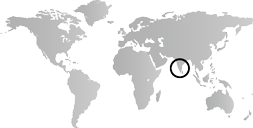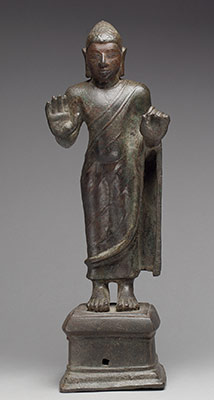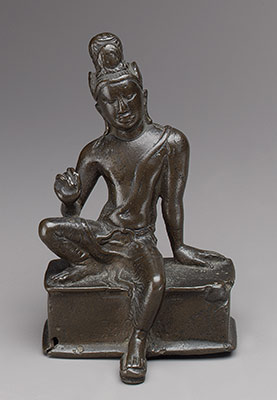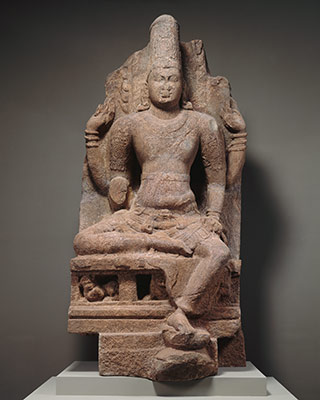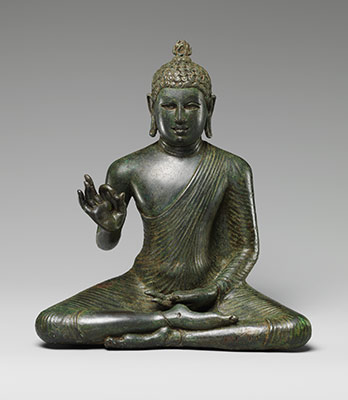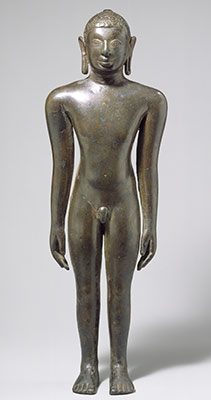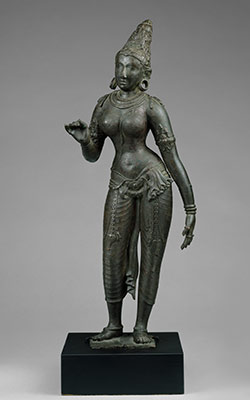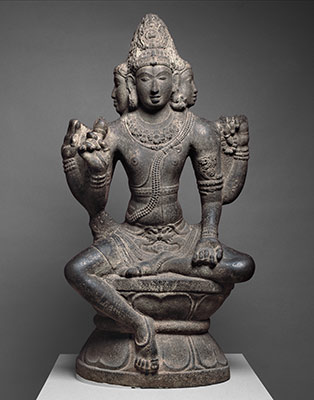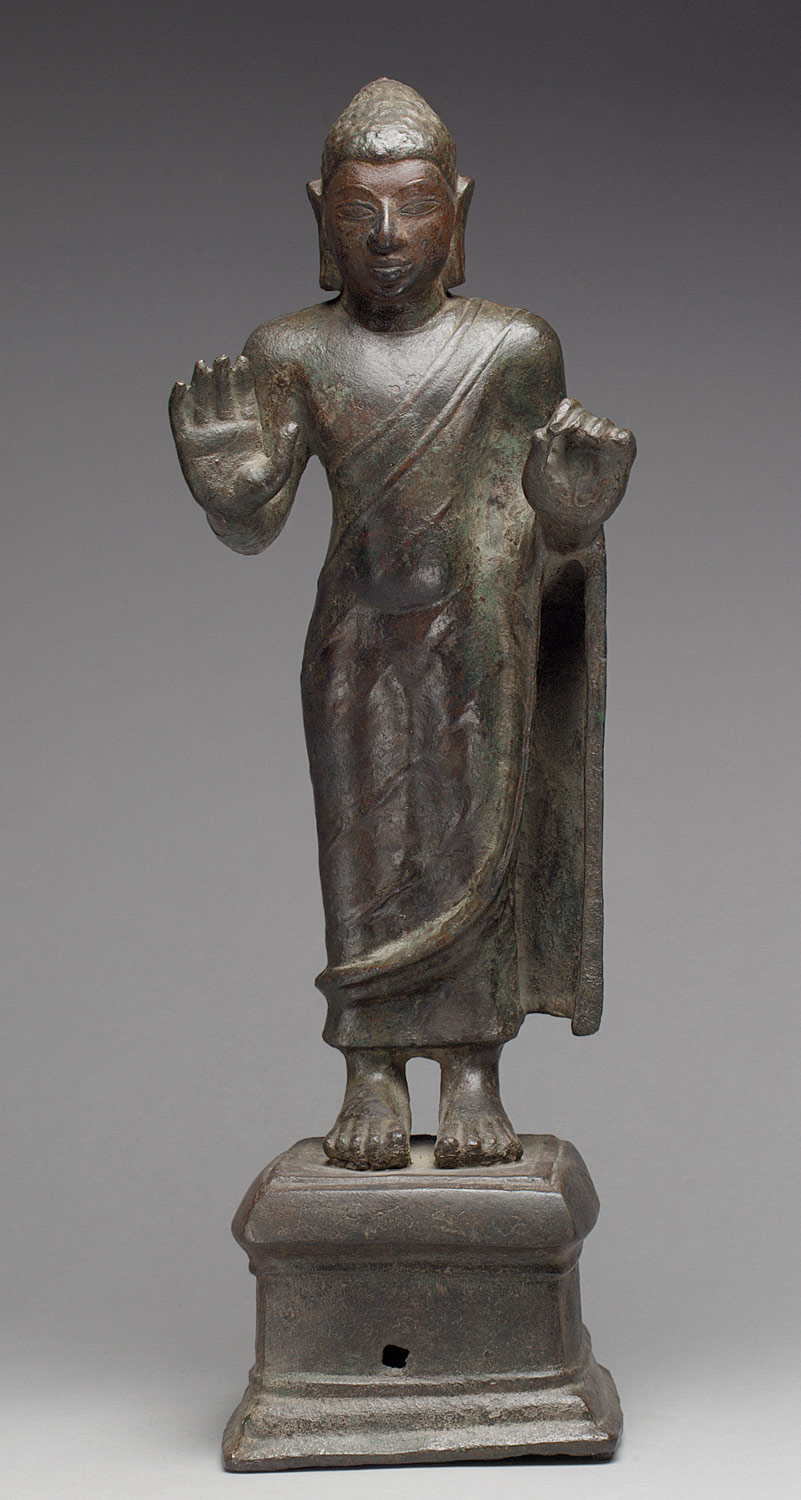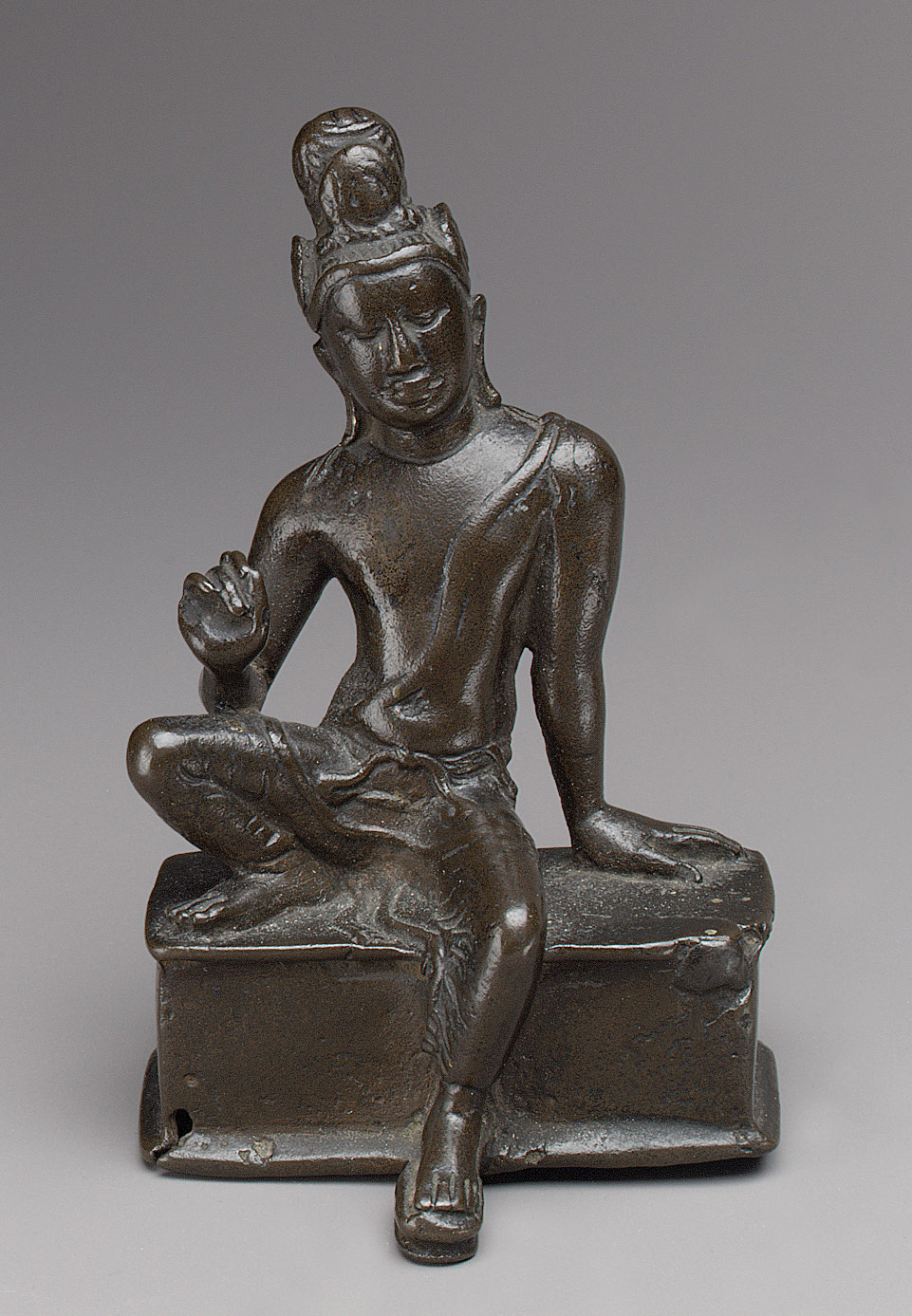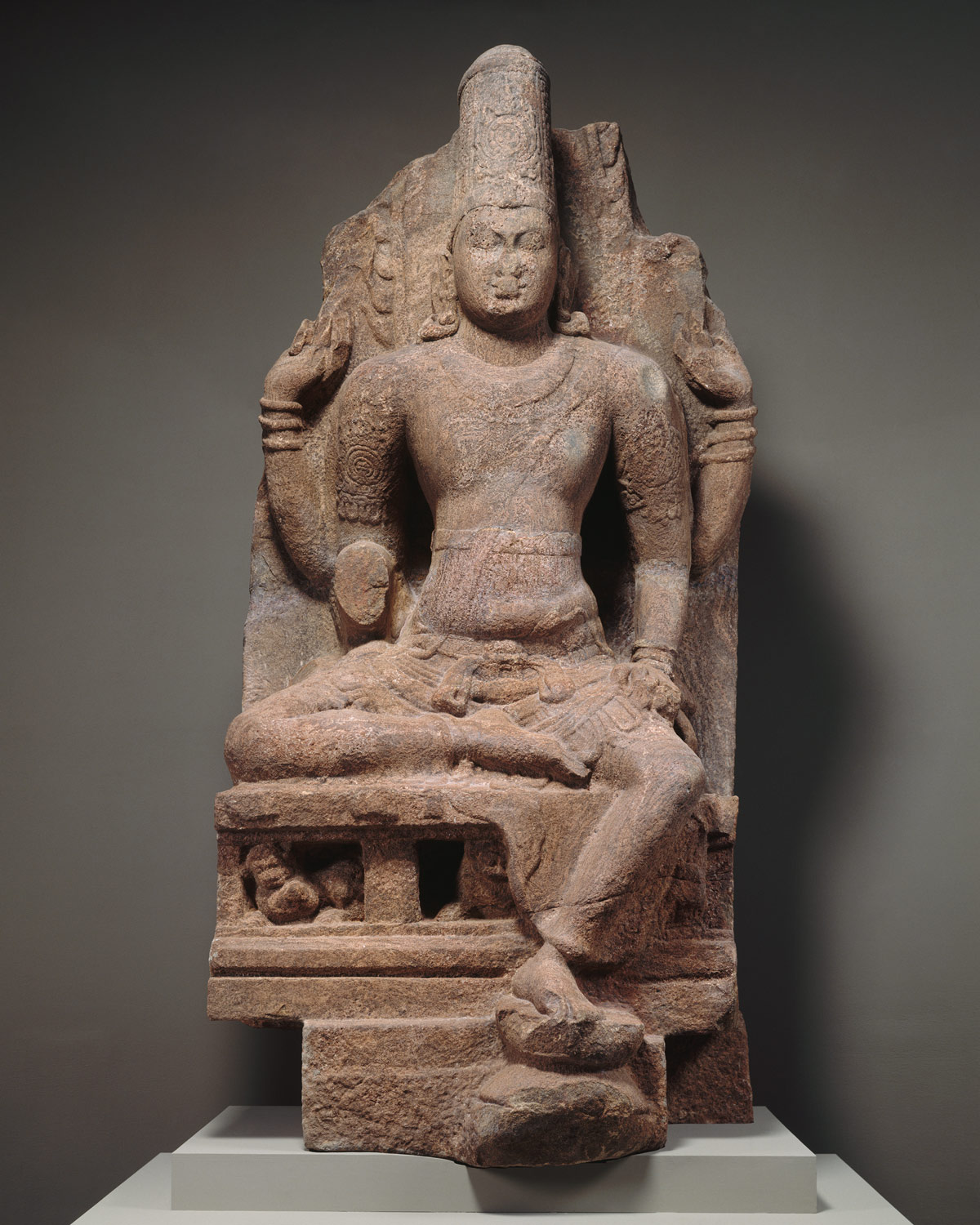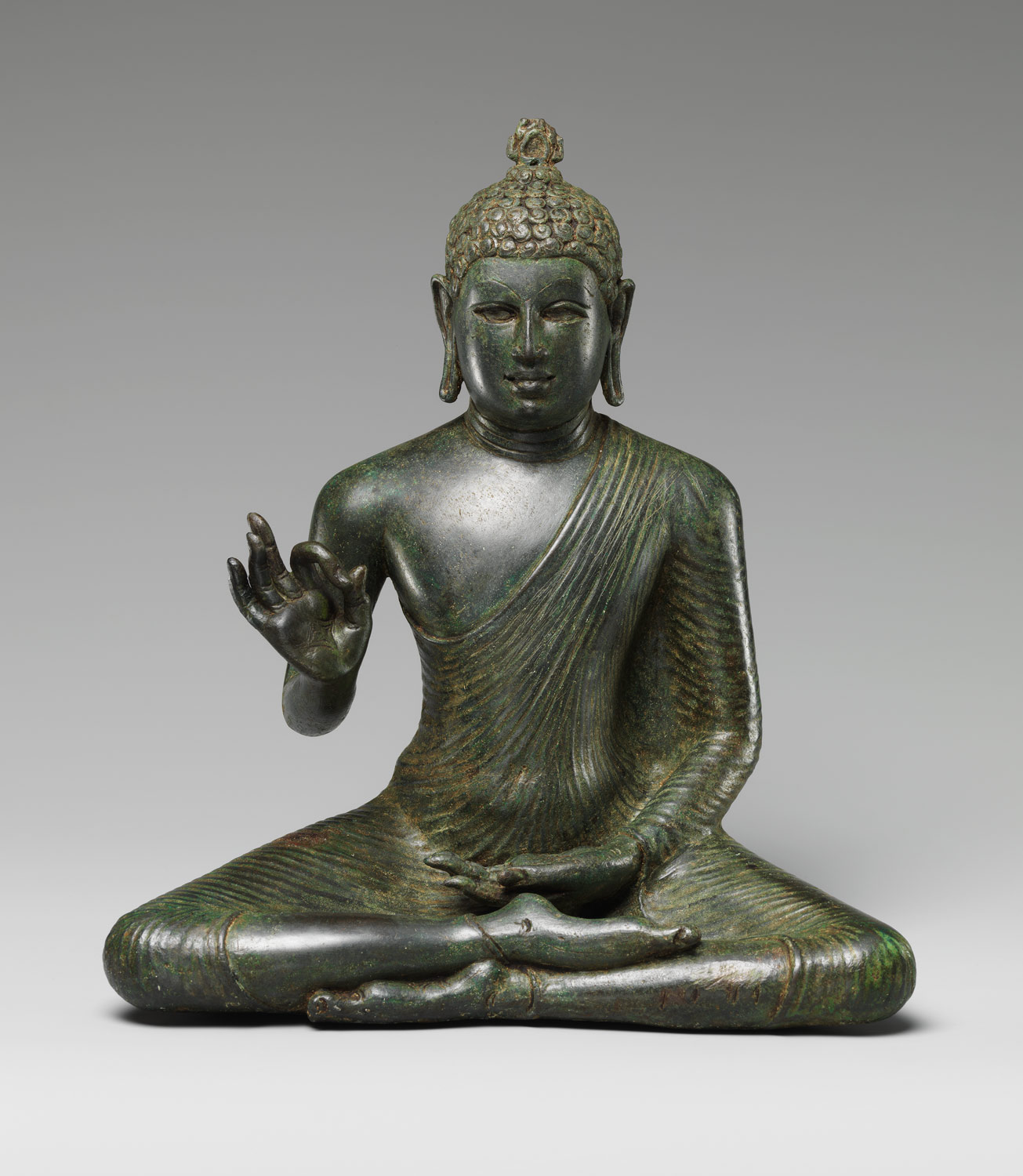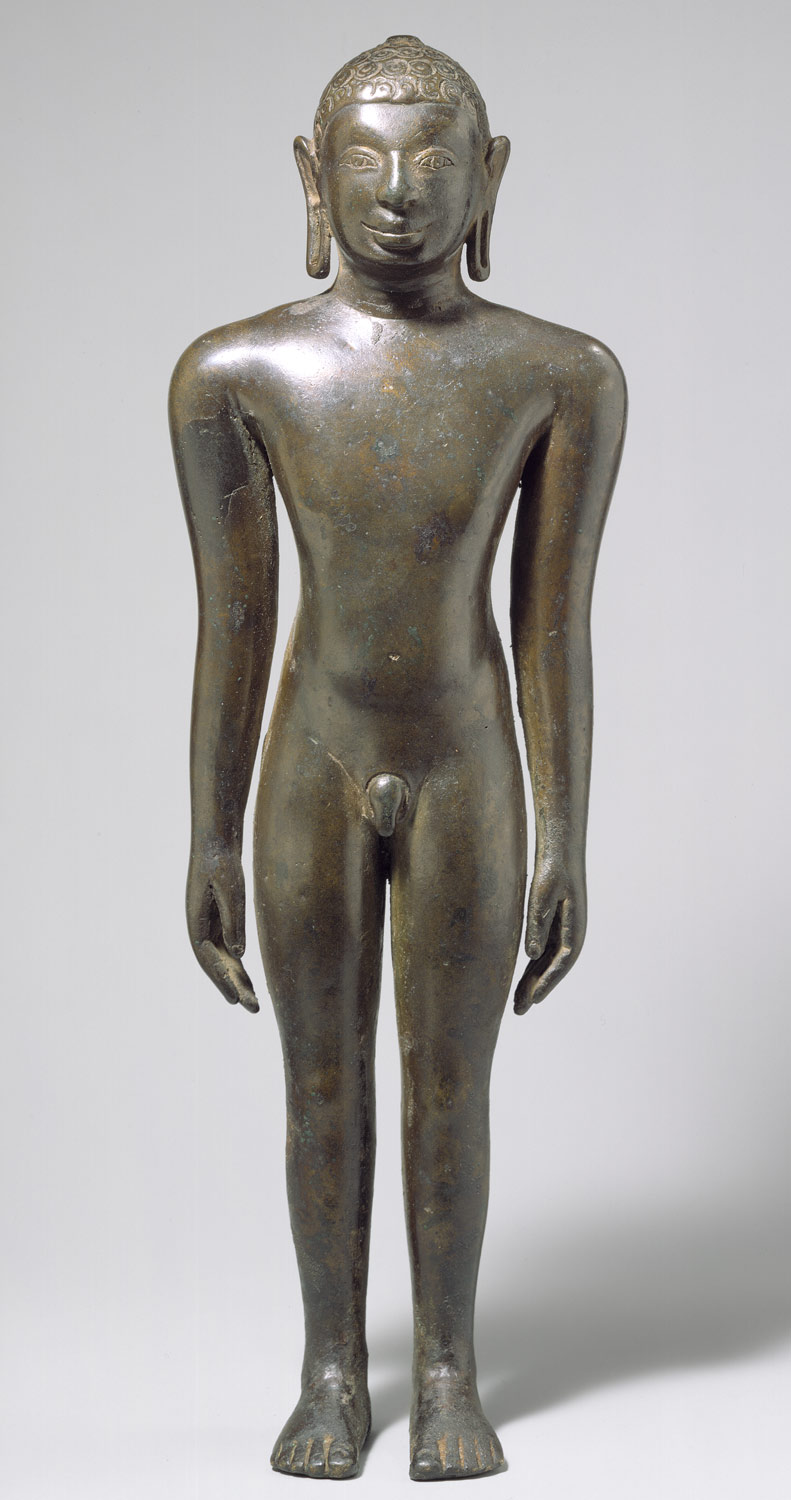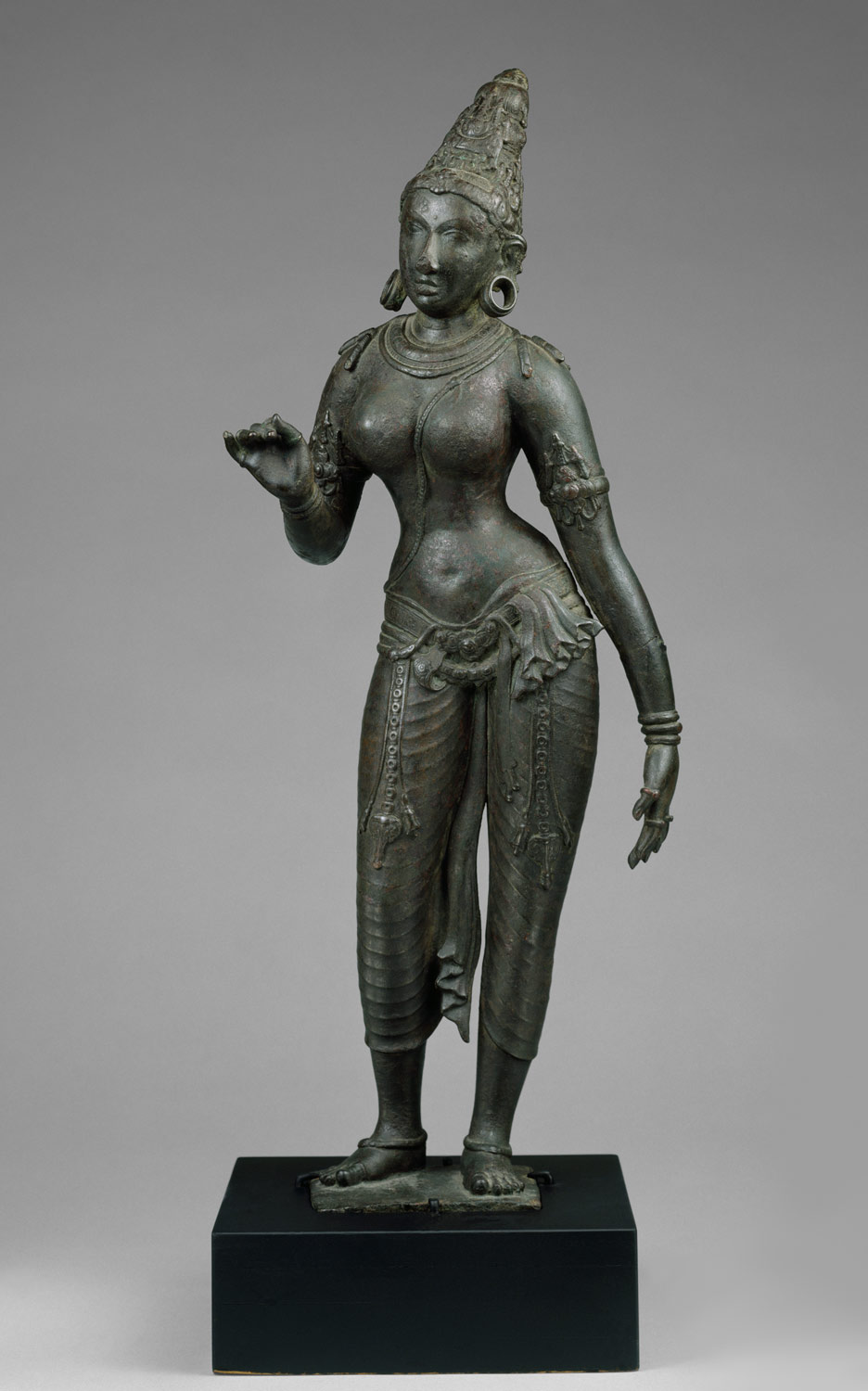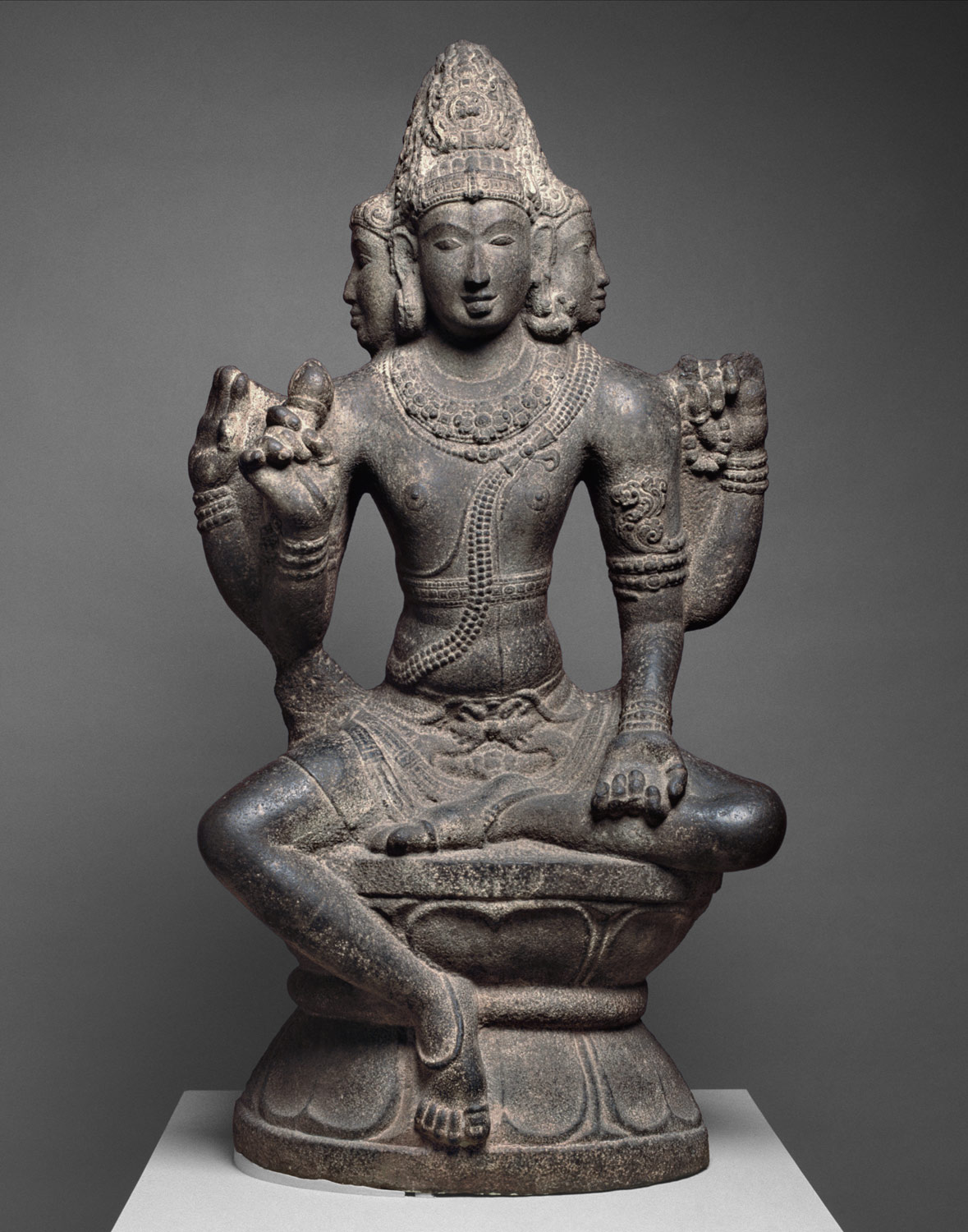The religion that we now call Hinduism begins to take recognizable shape in this period, and is patronized by the dynamic regional kingdoms—Pallava, Pandya, Chalukya, and Chola—that rise up in the wake of Gupta power. Temples are the focal point of both religious and social life, as regional rulers construct massive temple complexes that attest to the divine origins of their power on earth. Buddhism and Jainism also thrive. Tamil, used as a literary language from the beginning of the first millennium, is the primary medium of the early bhakti (devotional) poets of the south. These poets represent the beginnings of a powerful pan-Indian social and cultural orientation that transforms Indian religions into the next millennium.
South Asia: South, 500–1000 A.D.
Timeline
500 A.D.
625 A.D.
CENTRAL AND DECCAN
SOUTH
SRI LANKA
625 A.D.
750 A.D.
CENTRAL AND DECCAN
SOUTH
SRI LANKA
750 A.D.
875 A.D.
CENTRAL AND DECCAN
SOUTH
SRI LANKA
875 A.D.
1000 A.D.
CENTRAL AND DECCAN
SOUTH
SRI LANKA
Overview
Key Events
-
ca. 3rd–mid-13th century
Sinhalese civilization flourishes in Sri Lanka. Major cultural centers include the kingdoms of Rajarata in the north (especially the cities of Anuradhapura and Polonnaruwa), Dakkinnadesa in the west, and Rohanna in the south.
-
ca. 500
Devotional (bhakti) theistic movements develop in present-day Tamil Nadu. Early cults, primarily devoted to Shiva and Vishnu, include the sixty-three Shaiva Nayanar and twelve Vaishnava Alvar saints (traditionally including low-caste men and a woman, Antal), in the seventh century. These poets sing of their direct experience of god. Non-Puranic and Vedic deities are associated with and absorbed into mainstream Puranic ones; for example, the god Murugan, mentioned in early Tamil Cankam literature, comes to be absorbed into Shaiva traditions as Shiva’s son, Skanda.
-
500–600
The Pallava and Pandya families, whose lineage can be traced back to the third and second century B.C., rise to imperial prominence. The figural style in Pallava art shows clear similarities with earlier Buddhist traditions, although architectural predecessors are unclear. It is thought that the use of stone funerary monuments in the south delayed the use of stone for temple architecture; prior to the Pallava period, perishable materials were apparently used. In general, the preponderance of ancient sacred (rather than secular and domestic) architecture in South Asia results from the tendency to use stone for religious buildings and perishable materials (wood and brick) for others.
-
ca. 535–550
A cave-temple is dedicated to Shiva on Elephanta Island (near modern Bombay), with structural elements consistent with built (not carved) structures.
-
ca. 578
Shrines to Shiva and Vishnu are built at Badami in Karnataka, base of the Early Chalukya dynasty. Illustrations of Hindu mythology found at the site provide prototypes for later temples, which are filled with sculptured and cave images whose worship becomes central to Hindu practice.
-
600–700
Tamil poetry, music, and art flourishes, and the Tamil epic poems Shilappadigaram and Manimegalai are composed. Regional literatures continue to flourish in following centuries, in the form of original works and the re-creation of Sanskrit texts in vernacular languages, such as in Tamil (the Ramayana, by Kambar) and Kannada (the Ramayana and Mahabharata).
-
ca. 600–700
Complicated irrigation techniques using stone dams and sluices develop in Sri Lanka. Hydraulics, including wet-rice cultivation, provide major economic and cultural foundations on the island until around 1200, when they are replaced by trade economies.
-
ca. 634
Early examples of Early Chalukya monuments, such as at Aihole, are cut from rock, while later structures are built; these techniques coexist, however. The complex at Aihole, made up of numerous structures, represents all the temple forms used in the period, and some buildings in the complex represent a hybrid of the two styles, southern and northern, which are both produced in the Deccan.
-
ca. 650–670
The Pallavas, who rule from their capital at Kanchipuram (in present-day Tamil Nadu), found the city of Mamallapuram to commemorate their defeat of the Chalukyas. Mamallapuram plays an important role as a seaport and in the dissemination of Indian culture to Southeast Asia. Most of the city’s monuments are rock-cut. The Pandava Rathas, five monolithic temples that seem to replicate brick and wood structures common to the period, are carved from an outcrop of stone, and provide the earliest examples of dravida or southern-style architecture. Pallava architecture becomes increasingly ornate, as is typical of all Hindu temple architecture from 500 onward; this is seen in the Shore Temple (at Mamallapuram) and Kailashanatha Temple (at Kanchipuram) in the eighth century.
-
ca. 700 or later
The Pali-language Mahavamsa, or “Great Genealogy,” is compiled in Sri Lanka, a record of the island’s history. Based on earlier works from the fourth century, this is the world’s second-oldest continuous written history.
-
700–800
The philosopher Shankaracharya articulates and propounds the Advaita (nondualistic) school of monotheism, one of the six traditional orthodox schools, or darsana, of classical Indian philosophy that developed from the sixth to the third centuries B.C. The others are Nyaya, Vaisesika, Samkhya, Yoga, Purva-mimamsa, and Vedanta, each based on the authority of the Veda and concerned with the systematic analysis of the nature of body, mind, and the ultimate. Most traditions consist of scholarly commentaries on core texts, or sutras.
-
ca. 753–759
The Rashtrakutas, a Chalukya feudatory dynasty, overthrow their rulers and attain imperial status, absorbing smaller principalities such as the Kalachuris. The Rashtrakutas expand from the Deccan into South and Central India, and share control of the subcontinent with the other major powers of the period: the Gurjara-Pratiharas in the north, the Palas in the east, and the Pallavas in the far south. The Later Chalukyas, ruling from their capital at Kalyani (in present-day Mysore), displace the Rashtrakutas in the eighth century.
-
ca. 775
The Kailasha Temple is sponsored by Krishna I of the Rashtrakuta dynasty. A series of freestanding structures cut out of volcanic rock in the low Deccan hills at Ellora, the buildings that comprise the temple complex are covered in intricate carvings on the inside and out. Such cave and rock-cut structures are first adopted for Buddhist architecture in the third century and later for the construction of Hindu temples. The Kailasha temple is India’s largest rock-cut temple and represents the pinnacle of a waning tradition. Freestanding, constructed temples predominate from this time forward.
-
800–900
Later Chalukyas patronize the poet Bilhana, author of Chaurapanchasika (Fifty Stanzas of a Love-Thief), which describes a poet’s clandestine tryst with a princess on the eve of his execution. The name of this text becomes associated with a painting style that emerges in North India in the sixteenth century.
-
10th century
The completion of the Bhagavata Purana, composed and compiled in Sanskrit, describes the incarnations of Vishnu and draws on earlier Vaishnava traditions such as the Harivamsa (first century) and Vishnu Purana (fifth century). It is influenced by southern ecstatic devotional traditions. Vishnu is traditionally associated with ten avatars (“incarnations”); two of the most popular of these are Rama (hero of the Ramayana and model of ideal kingship) and the cowherd/lover Krishna. These avatars, particularly Krishna, are frequently portrayed in art and literature, and inspire artistic and literary traditions across the region.
Citation
Related
Map
